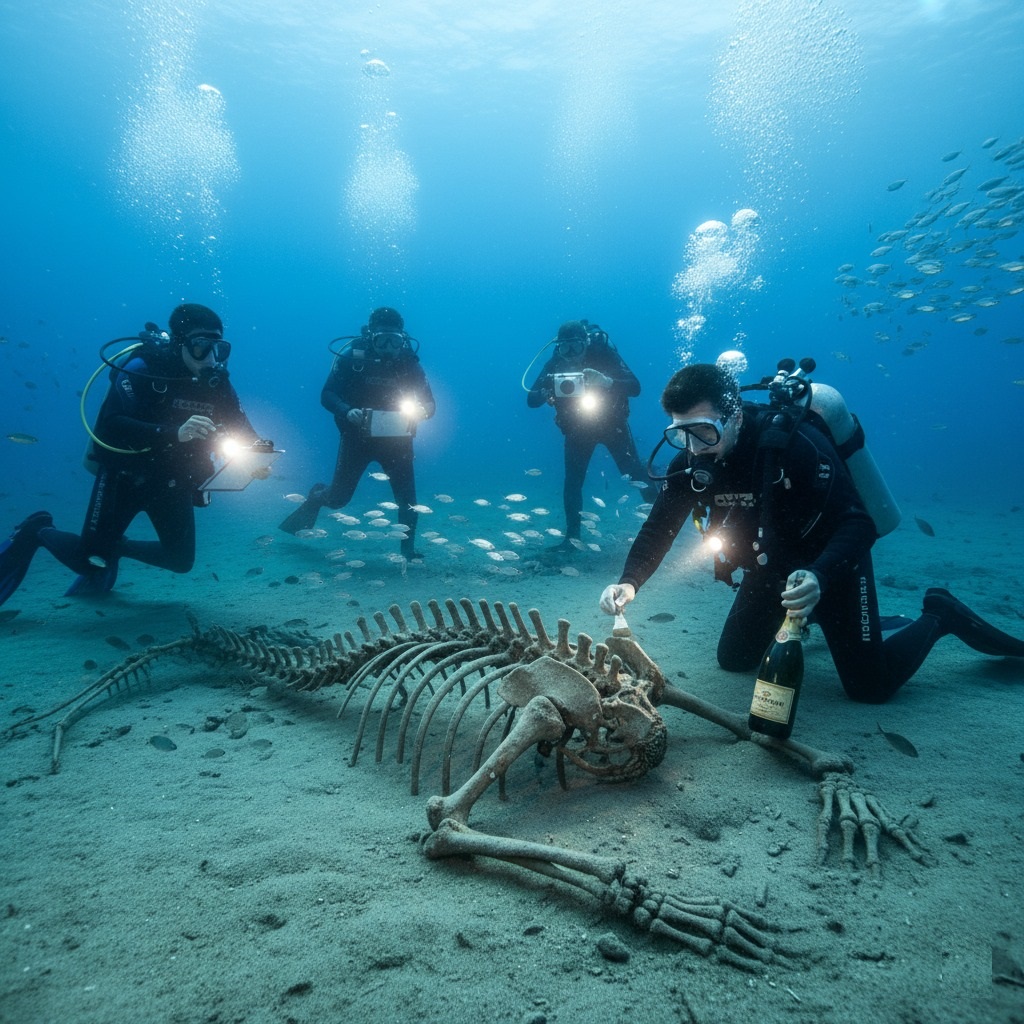Unearthing the Leviathan of the Mariana Trench: A Deep-Sea Revelation

The year is 2077. Humanity’s insatiable curiosity has long since conquered the moon and Mars, yet the greatest mysteries still lay hidden beneath the ocean’s surface. Dr. Aris Thorne, a marine archaeozoologist renowned for his unconventional theories, had dedicated his life to proving that not all ancient creatures fit neatly into our paleontological textbooks. His latest expedition, funded by the Oceanic Exploration Syndicate, targeted the enigmatic abyss of the Mariana Trench – a place less explored than the lunar far side.
For weeks, the submersible Trenchwalker had meticulously scanned the Challenger Deep. Then, an anomaly. Not a geological formation, nor a known biological signature, but something vast and undeniably structured. “It’s a bone matrix,” Thorne declared, his voice a low hum over the comms, “but unlike anything we’ve ever cataloged.”
The dive team, led by the seasoned deep-sea explorer Captain Eva Rostova, was assembled. Lieutenant Hiroshi Tanaka, the expedition’s chief photographer, prepped his advanced light-amplified cameras. Dr. Lena Petrova, a structural engineer specializing in ancient seafloor stability, checked her data slate. And then there was Aris himself, practically vibrating with suppressed excitement.
As they descended, the colossal pressure of the Trench became a tangible weight, but their advanced suits and submersibles were designed for it. The light diminished until only their powerful external lamps cut through the eternal gloom. And then, there it was.
Sprawled across a sandy patch, half-buried in sediment disturbed by aeons of abyssal currents, lay a skeleton of truly epic proportions. It wasn’t merely large; it was monstrous. Ribs like ship timbers arced upwards, suggesting a creature far larger than any known whale, stretching for an estimated seventy meters. The skull, partially obscured, hinted at massive, archaic features. This was no ordinary marine animal.
“Lena, get readings on the sediment accretion rates,” Thorne commanded, his flashlight beam dancing over the fossilized bone. “Hiroshi, wide shots, then detail. Every angle.”
Captain Rostova, ever the pragmatist, moved to the creature’s head. With a specially designed deep-sea brush, she began to carefully clear away the fine silt that clung to the ancient bone. The air in the comms was thick with the rhythmic whoosh of their rebreathers. As she worked, a glint caught her eye. Partially wedged beneath a massive vertebra, nestled amongst detritus, was a object. Carefully, she freed it.
“Aris,” she announced, her voice tinged with disbelief, “you’re going to want to see this.”
Thorne swam over, his eyes widening behind his mask. In Rostova’s gloved hand was a perfectly preserved, moss-covered champagne bottle. Its label, though faded, was still legible: “Maison Perrier-Jouët, Cuvée Belle Époque, 1898.”
A ripple of stunned silence passed between the divers. An 1898 champagne bottle, nearly 11 kilometers beneath the surface, next to a creature that defied modern biology? The implications were staggering. Was it a relic from a forgotten, catastrophic deep-sea exploration? Or, more sensationally, a testament to the creature’s discovery in an era long before humanity possessed the technology to reach such depths?
“This changes everything,” Thorne breathed, his gaze sweeping from the delicate bottle to the titanic bones. “This isn’t just an archaeological find, Captain. This is a historical paradox. The Leviathan of the Mariana Trench… it has a story far stranger than we could have ever imagined.” The real mystery, they realized, wasn’t just what the creature was, but who had found it first, and why they had celebrated its unearthing with a bottle of fin de siècle bubbly, leaving it as a silent, perplexing toast to the deepest secret of the sea.
